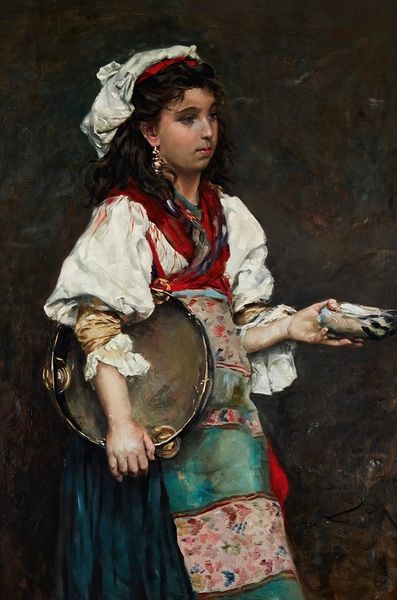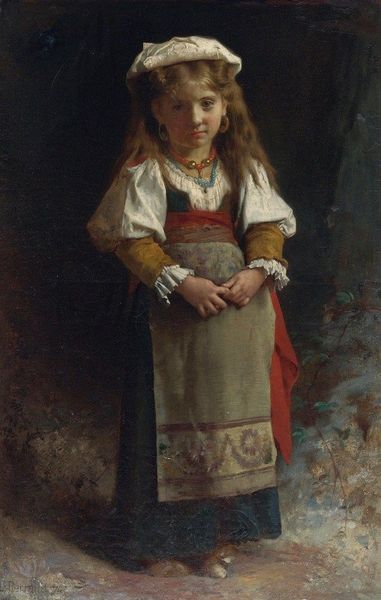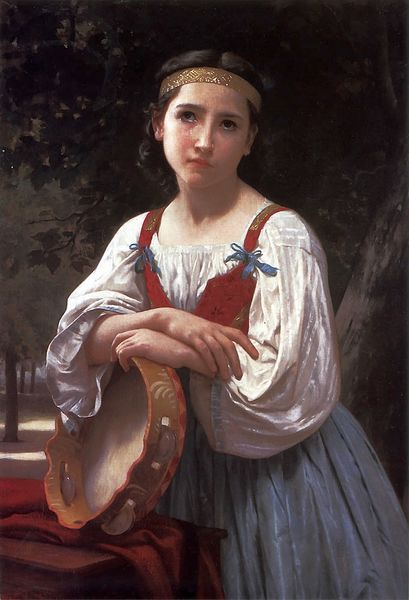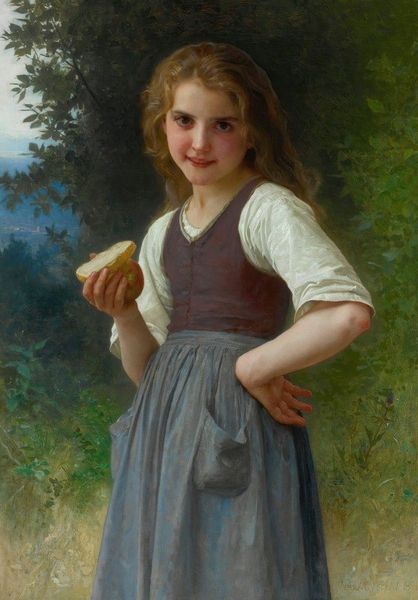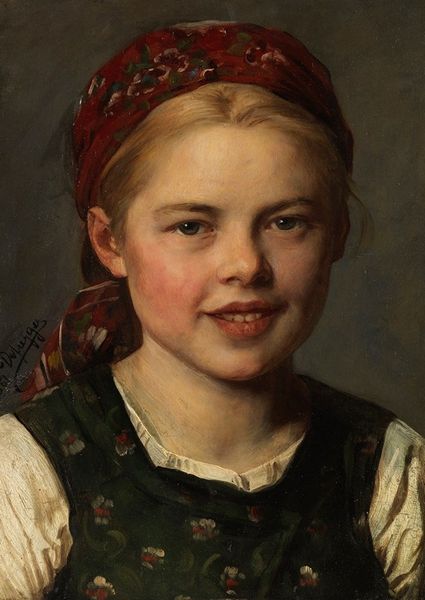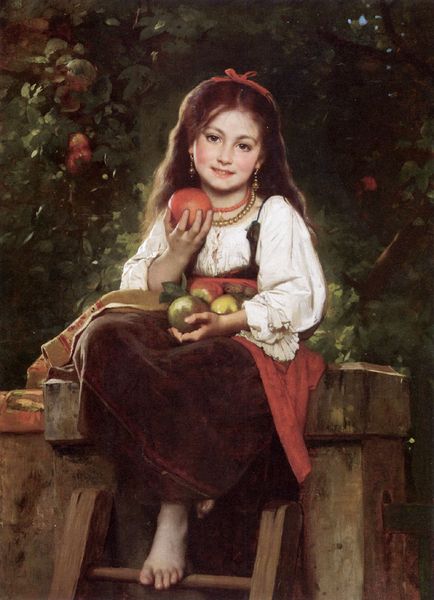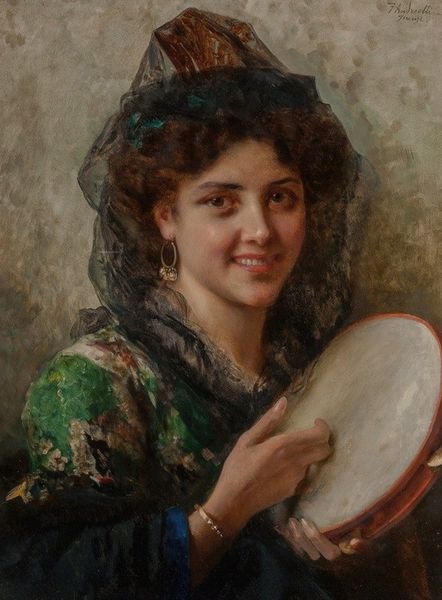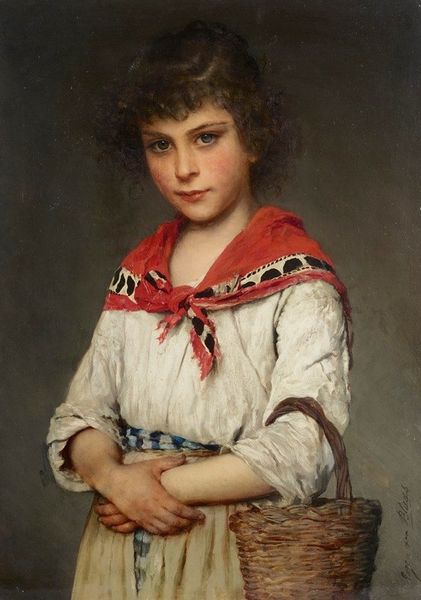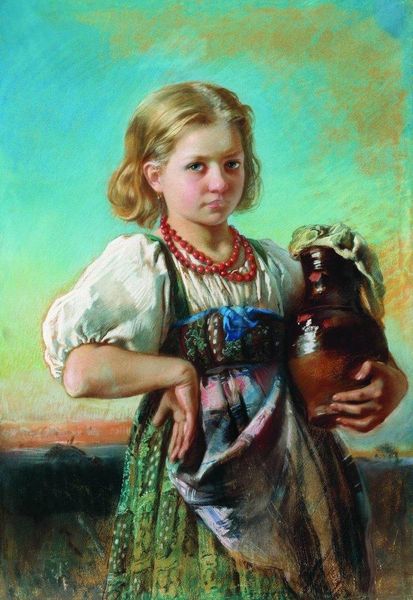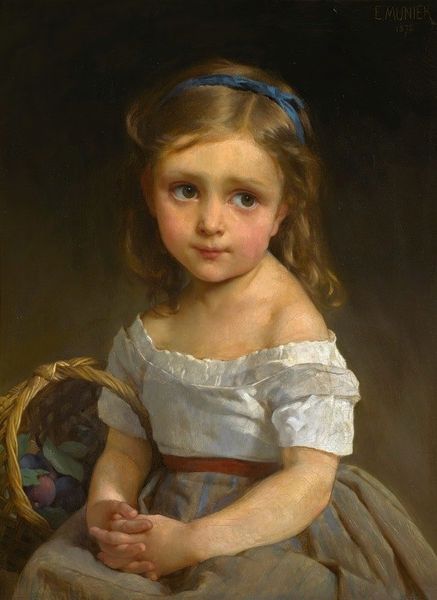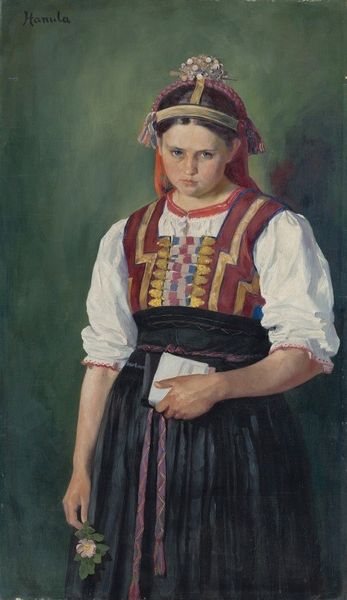
Copyright: Public Domain: Artvee
Curator: Welcome. Today we're looking at William Powell Frith's 1891 painting, "The sweetest little beggar that e’er asked for Alms." Editor: It's a lovely portrait. She seems so self-possessed, almost too poised to be a beggar. How do you interpret this work? Curator: It's precisely that tension we need to explore. Consider the social context: Victorian England had a romanticized view of poverty, often sentimentalizing those in need. The title itself performs this sentimentality. Editor: So you’re saying the painting may be participating in that…almost exploiting the child’s image? Curator: Potentially. It prompts us to question Frith's intentions and the broader societal gaze on the poor. Does this image challenge or reinforce class structures? Consider her direct gaze—does it confront the viewer, or does it invite pity and thus maintain a power dynamic? Also what's your impression about this odd object she's holding. Almost looks like a musical instrument. Any ideas? Editor: I think it could be a tambourine! Given the title and time period, she might be performing on the streets. This might be part of a wider commentary on child labor during the period. Curator: Exactly. It layers another level to the question of child labor. Her age and what she's holding underscores economic inequalities and expectations based on gender. So what is your feeling after discussing this artwork now? Editor: I came in thinking it was simply a pretty picture, but now I see how it’s connected to bigger conversations about Victorian society and its complex relationship with poverty and child labour. Thanks. Curator: Precisely, seeing beyond the surface allows us to understand how art both reflects and shapes societal norms and inequalities.
Comments
No comments
Be the first to comment and join the conversation on the ultimate creative platform.
